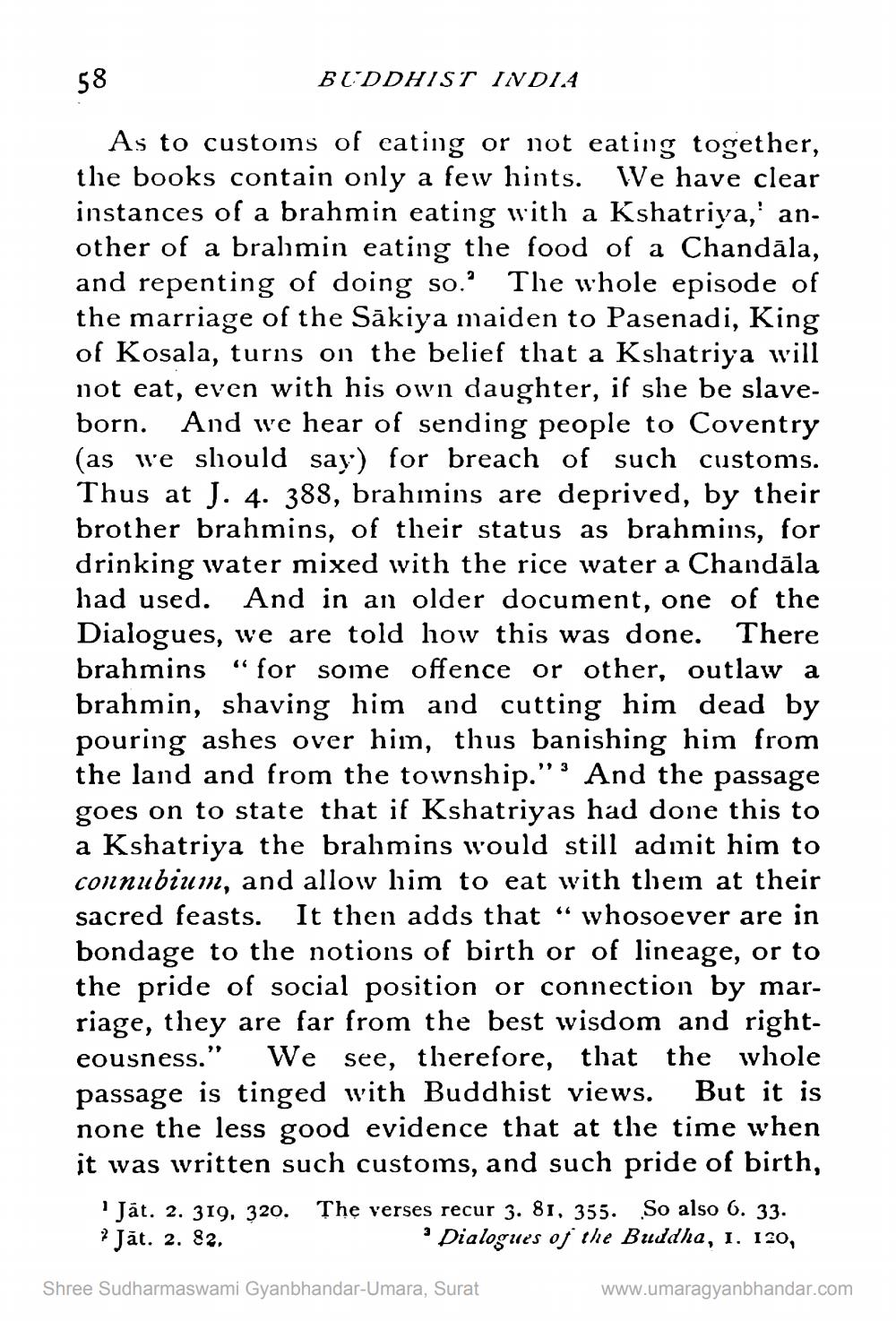________________
58
BUDDHIST INDIA
As to customs of cating or not eating together, the books contain only a few hints. We have clear instances of a brahmin eating with a Kshatriya, an. other of a brahmin eating the food of a Chandāla, and repenting of doing so.' The whole episode of the marriage of the Sākiya maiden to Pasenadi, King of Kosala, turns on the belief that a Kshatriya will not eat, even with his own daughter, if she be slaveborn. And we hear of sending people to Coventry (as we should say) for breach of such customs. Thus at J. 4. 388, brahinins are deprived, by their brother brahmins, of their status as brahmins, for drinking water mixed with the rice water a Chandāla had used. And in an older document, one of the Dialogues, we are told how this was done. There brahmins “for some offence or other, outlaw a brahmin, shaving him and cutting him dead by pouring ashes over hiin, thus banishing him from the land and from the township.". And the passage goes on to state that if Kshatriyas had done this to a Kshatriya the brahmins would still adinit him to connubium, and allow him to eat with them at their sacred feasts. It then adds that “whosoever are in bondage to the notions of birth or of lineage, or to the pride of social position or connection by marriage, they are far from the best wisdom and righteousness." We see, therefore, that the whole passage is tinged with Buddhist views. But it is none the less good evidence that at the time when it was written such customs, and such pride of birth,
Ját. 2. 319. 320. The verses recur 3. 81, 355. So also 6. 33. ? Jāt. 2. 82.
• Dialogues of the Buddha, 1. 120,
Shree Sudharmaswami Gyanbhandar-Umara, Surat
www.umaragyanbhandar.com




